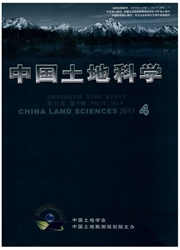

 中文摘要:
中文摘要:
研究目的:研究区域碳通量时空演变规律和主要影响因子,指导区域减排增汇。研究方法:分别从人口碳源、水泥生产碳源、化石燃料消费碳源、森林植被碳汇、农作物碳汇、土壤碳汇6大引致碳库变化的通量测算区域净碳排总量,梳理时间尺度变化趋势,探索空间尺度分异规律,定量化建立碳通量影响因子回归模型,讨论测算误差并研究展望。研究结果:(1)江两省2008年碳排总量54.88TgC,1996—2008年碳排总量年均增幅7.19%,但单位GDP碳排量却以年均5.93%的降幅逐年递减;(2)人口、水泥生产、化石能源消费、森林植被成为影响区域碳库变化的主要因子,累计因子贡献率达到99.93%;(3)在95%的置信区间建立多元一次回归模型,以期在自变量预测的基础上减控未来碳通量值;(4)碳排强度在空间分布上与产业结构和工业布局密切相关,以工业和能源为主导的九江、萍乡、宜春等地市分别以10.61TgC、9.77TgC和8.69Tgc的碳排量位列全省前三。研究结论:提供了较全面测算地区净碳排的有力工具。
 英文摘要:
英文摘要:
The purpose of this paper is to explore the spatio-temporal evolution and the main factors of carbon flux in order to provide reference for reducing the regional carbon emission. The study steps included that (1) calculating the net carbon emission by accumulating the value of population carbon source, cement production carbon source, fossil fuel consumption carbon source, forest vegetation carbon sink, crop carbon sink, soil carbon sink; (2) exploring the changing tendency of carbon flux at spatial and temporal levels; (3) quantitatively building the carbon flux regression model, and(4) finally discussing the possible errors and the potential further research. The results showed that( 1 ) the net carbon emission of Jiangxi Province was 54.88 TgC altogether in 2008. From 1996 to 2008, the annual increased ratio of carbon emissions was 7.19%, nevertheless, the carbon emission per unit GDP gradually decreased year by year at the rate of 5.93%;(2) the main factors of the carbon flux included population, cement production, fossil energy consumption and forest vegetation, and the accumulative contribution reached 99.93%: (3) a rntJlti-~l~mont lln,~rregression model was successfully built within 95% confidence interval;(4) the intensity of carbon emission was related to the industrial structure and location. Jiujiang, Pingxiang and Yichun were the three leading cities regarding the carbon emissions due to their heavy industries, and their emission were 10.61 TgC, 9.77 TgC and 8.69 TgC in 2008, respectively. The conclusion of the paper was that the study provided an effective tool for comprehensively estimation on regional carbon emission.
 同期刊论文项目
同期刊论文项目
 同项目期刊论文
同项目期刊论文
 期刊信息
期刊信息
